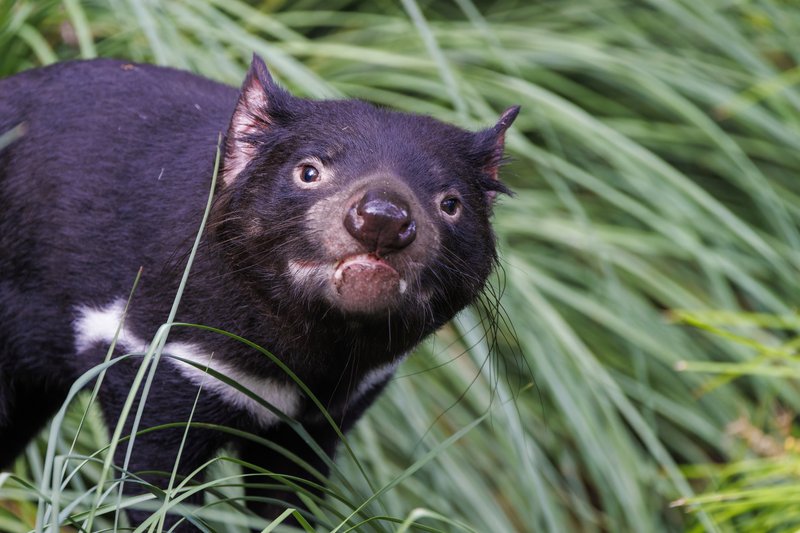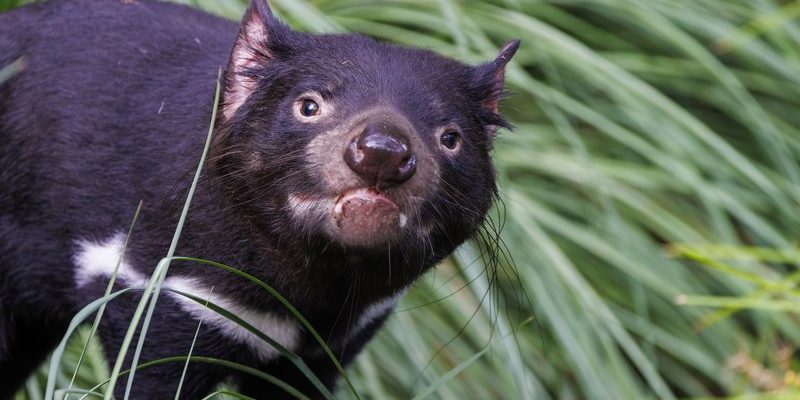
These little carnivores aren’t just about brute strength; they have a complex relationship with their environment and food sources. Whether it’s hunting for food or scavenging, their techniques are as robust as their personalities. So, let’s dive into the diet and hunting strategies of the Tasmanian devil and discover what makes it such a remarkable survivor in the wild.
What Do Tasmanian Devils Eat?
The diet of the Tasmanian devil is primarily carnivorous, meaning they mostly consume meat. They tend to feast on small to medium-sized animals, making them opportunistic hunters. Their menu includes:
- Wallabies
- Birds
- Rodents
- Insects
- Carcasses of larger animals
Here’s the thing: Tasmanian devils have incredibly strong jaws that can crush bone, allowing them to eat almost every part of their prey—flesh, bones, and even fur. This is somewhat like if you had an all-you-can-eat buffet where everything was on the table, and you could enjoy it all without leaving anything behind. Their ability to consume a variety of food sources plays a key role in their survival, especially in the wild, where meals can be scarce.
What’s more, they are known for their remarkable scavenging skills. If they come across a fresh carcass—like a dead kangaroo—they will often gather in groups to feast. This behavior isn’t just about eating; it’s a social affair too. They make loud, eerie sounds that can be quite unsettling, but it’s all part of their communication ritual during feeding time.
Hunting Techniques of the Tasmanian Devil
When it comes to hunting, Tasmanian devils are resourceful and clever. They rely on a mix of stealth and speed to catch their prey. Unlike some predators that might pounce outright, devils often stalk their targets carefully, positioning themselves for the best chance of success.
Imagine being a tiny dinosaur for a moment; you need to be both silent and swift. Devils tend to rely on their keen sense of smell and hearing to locate food, sneaking up to unsuspecting wallabies or birds. They might use shadows or natural cover to get close enough before launching a surprise attack. Once they’re close, their sharp teeth and powerful bite do the rest. It’s like a game of hide-and-seek, but the stakes are much higher.
Additionally, Tasmanian devils can cover ground quickly when they need to. If they come across a slower-moving animal or if the opportunity arises, they’ll dash forward to capture it. They have relatively short bursts of speed which they make the most of when hunting.
Scavenging: A Key Part of Their Diet
While hunting plays a big role in their diet, scavenging is perhaps even more crucial for the Tasmanian devil. Many devils will take advantage of carcasses they find, rather than relying solely on their hunting skills. This makes them an essential part of the ecosystem, helping to keep the environment clean by consuming dead animals.
You might wonder how they manage to find these carcasses. Well, their acute sense of smell helps them locate food from a distance. Imagine being able to detect a pizza baking several blocks away—it’s that kind of powerful nose! Their ability to sniff out potential meals plays a significant part in their survival, especially during leaner times when hunting is less successful.
What’s also captivating is their social behavior around scavenging. When a devil finds a carcass, it often attracts others, leading to a feeding frenzy. This communal feeding not only provides food but helps them bond within their social groups, showcasing their complex social behavior.
Adaptations for Survival
The Tasmanian devil has some fascinating adaptations that enhance its ability to find food and survive in its environment. As a nocturnal creature, it’s primarily active at night, which helps avoid predators and capitalize on the cover of darkness to hunt and scavenge for food.
Their powerful jaws and large teeth have evolved to tackle tough prey, while their size allows them to compete with other scavengers or predators effectively. It’s as if they’re equipped with built-in tools designed for their unique diet and lifestyle. Also, their fur is quite thick, protecting them from the elements as they roam through Tasmania’s varied landscapes, from forests to grasslands.
These adaptations are not just about survival; they also highlight the intricate connections within the ecosystem. Tasmanian devils play a pivotal role in maintaining balance. By being both hunters and scavengers, they help control animal populations and recycle nutrients back into the environment.
The Impact of Disease on Their Hunting and Diet
Unfortunately, the Tasmanian devil faces significant threats, especially from a contagious cancer known as Devil Facial Tumor Disease (DFTD). This disease affects their ability to hunt and feed effectively, as it causes painful tumors that make it hard for them to eat. The impact is profound—not just on individual devils but on the entire population.
Decreased numbers lead to less competition for food, but it can also disrupt their social structures. When a part of a population declines, the balance of scavenging and hunting gets thrown off. It’s like a domino effect, where one change leads to more challenges for these unique animals.
Conservation efforts are in place to protect the remaining devil populations. Breeding programs and habitat conservation aim to help these creatures recover and continue their vital role in Tasmania’s ecosystem.
The diet and hunting strategies of the Tasmanian devil are a fascinating blend of instinct, adaptation, and social behavior. From their scavenging skills to their powerful jaws, these creatures exemplify the resilience of nature. They remind us of the importance of our ecosystems and the delicate balance that species maintain within them.
If you think about it, the Tasmanian devil is like a quirky puzzle piece that fits into the larger picture of wildlife in Tasmania. As we continue to learn about these remarkable creatures, it’s essential to support efforts that protect them. After all, every bit of knowledge helps us appreciate the incredible world we share.

